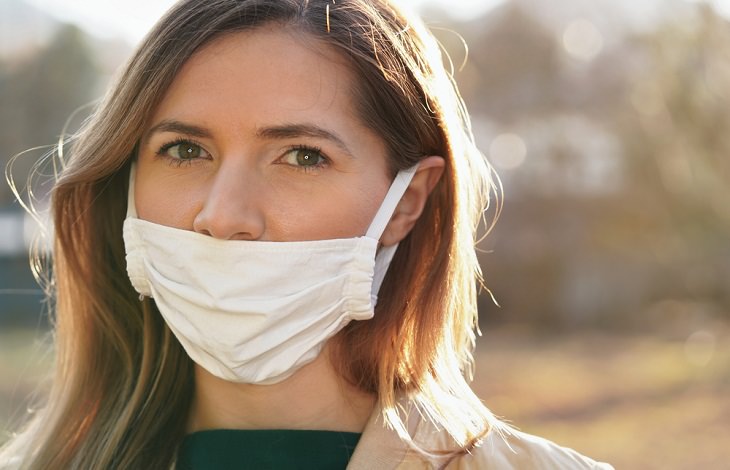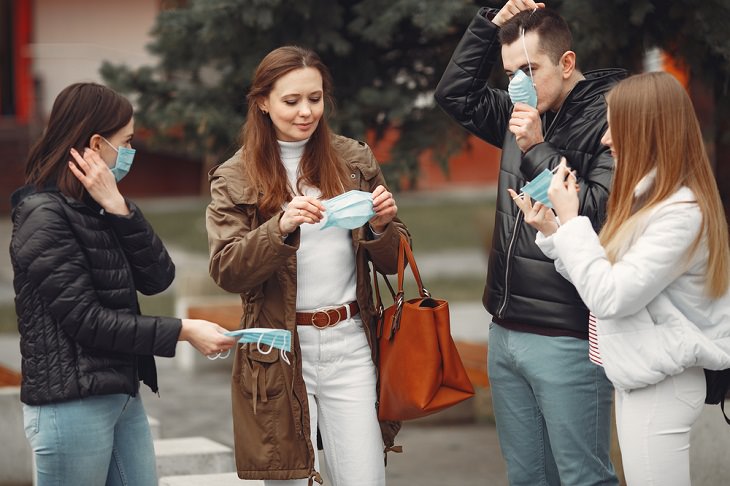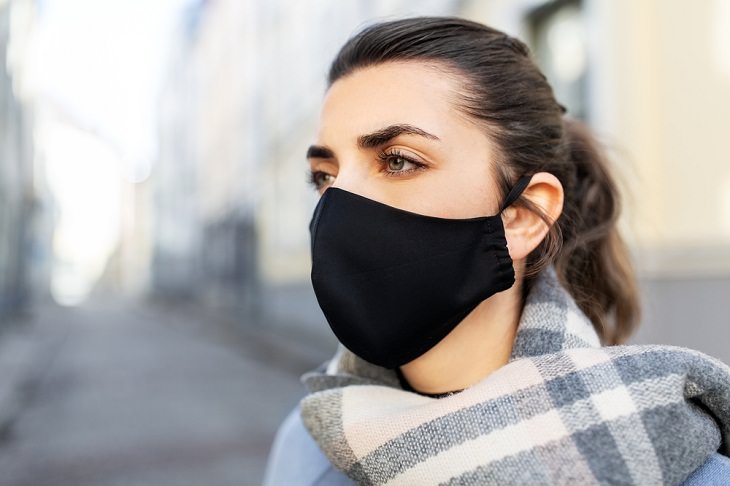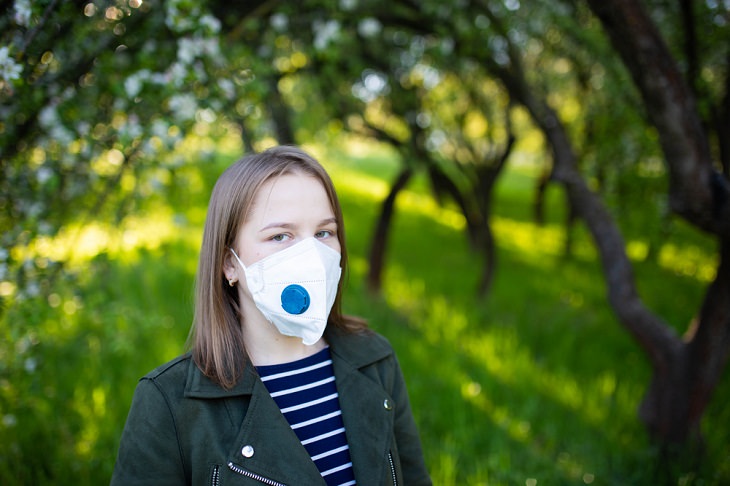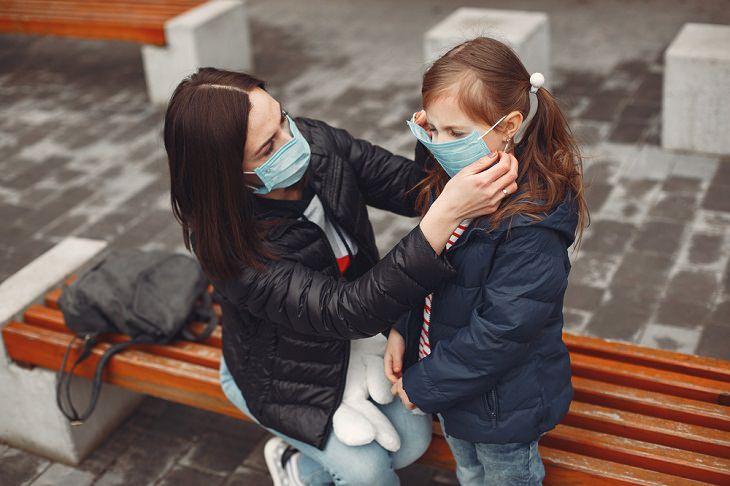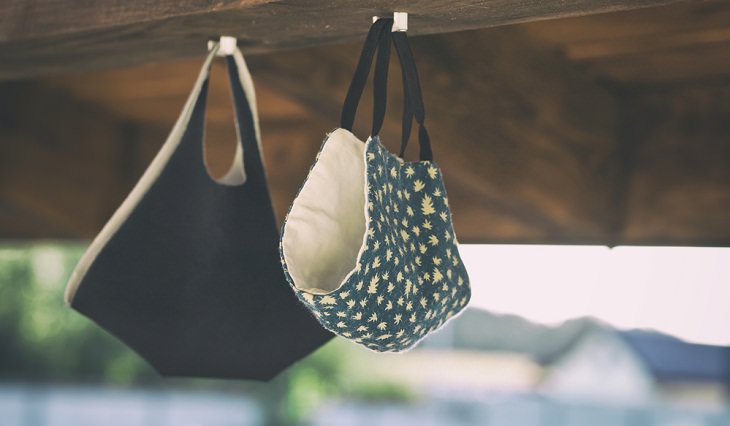While we all know by now that washing your hands is essential to prevent transmission of the coronavirus, it’s equally important to remember the importance of following proper hand hygiene before putting on a mask and after you remove it. Unfortunately, many people tend to overlook this basic practice.
Health experts have stressed that washing hands before we put on a mask helps avoid any contaminants to get on the mask. Similarly, after we remove a mask, it is important to wash hands to ensure that no viruses or infections are transferred to them.
2. Wearing your face mask with your nose exposed
This one should be obvious but you would be shocked to know just how many people completely disregard it. In fact, chances are that you would have probably come across many people wearing their masks with their noses exposed. This is wrong and dangerous and completely takes away the benefits of wearing a mask.
Yes, your mouth might be covered but the nose is where many viruses are inhaled. Hence, you are increasing the likelihood of inhaling high viral loads by keeping your nose exposed. A study published in the journal Cell disclosed that cells in the nose are more likely to be infected with the coronavirus than those in the lung and throat areas. This makes it even more vital for you to keep your nose completely covered with the mask when you are out.
Moreover, you are also increasing the risk of infecting others with the virus this way if you accidentally sneeze on them while your nose was exposed.
3. Not cleaning your face after wearing a mask
During the last few months, many people have reported facing mask-induced acne, particularly those who have had to wear masks for a long time every day. Dermatologists believe that the breakouts might be happening because people are not washing their face after wearing a mask. While this habit won’t help the spread of the virus, washing your face more frequently can help avoid acne breakouts.
To wash your face properly, dermatologists recommend a mild, fragrance-free cleanser after you have removed your mask at the end of the day. Moisturizing your skin afterward would also be helpful to keep the skin soft.
4. Sharing your mask with others
Face masks are hygienic items that are not meant to be shared, much like toothbrushes, hairbrushes, or the undergarments we use. Unfortunately, many people do so without considering all the bacteria and viruses that get trapped inside the mask when they breathe in it. These unwanted microorganisms can easily be transferred to someone else if they use your mask. Hence, it is not at all advisable to share your mask with anyone.
Also, if you are staying in a place with several other people, make sure that everyone’s mask is individually marked so that they aren’t shared by accident.
That being said, a person may be forced to share their mask with someone for some unavoidable reasons. In that case, make sure that you have washed it properly before sharing it.
5. Reusing disposable masks
Disposable masks certainly have their benefits. They are perfect for those who are always on the go as they can be worn and discarded after each use. However, many people still don’t realize that disposable masks are designed and certified for short-term use only and keep reusing them. This is dangerous and counterproductive.
Disposable masks should be worn for a single day and then discarded. Their ability to filter particles breaks down quickly and after just two days of use, they become totally ineffective. In fact, after the second day, the disposable mask carries the risk of bearing microorganisms and becoming soiled. Even washing disposable masks will make them less effective as their fibers break down once they have too much moisture in them.
6. Forgetting to wash your reusable mask
While reusable or cloth masks are a great option, we must remember to wash them after every use. Not every reusable mask wearer is doing so, as it turns out. A consumer survey conducted by a textile tech company in 2020 disclosed that almost 80% of survey participants were not washing cloth face masks after each use and another 8% revealed that they hadn’t washed them at all.
Experts say that if a reusable face mask isn’t washed for about two weeks, its usefulness will be greatly reduced. Washing them after every use ensures that they remain hygienic and effective. Moreover, leaving it unwashed for a few days leaves it open to collect sweat, oil, and droplets that will eventually create an unpleasant stench and make it tough for you to breathe. Here, it will be good to note that a reusable mask can be washed up to 30 times.
7. Wearing a mask with a valve
While masks with one-way valves have become quite popular these days, experts say you shouldn’t use them. This is because while they protect the wearer, "this type of mask does not prevent the person wearing the mask from transmitting COVID-19 to others," the CDC says. Masks with one-way valves or vents let air to be exhaled through a hole in the material. But this can then result in the released respiratory droplets reaching others.
These types of masks are generally used by people in construction work as they help them to breathe in filtered air and breathe out warm, moist air through the valve. They are also meant to provide protection against hazardous particles. However, they aren’t ideal for preventing the spread of infectious diseases. For that purpose, a proper cloth mask will do the job.
8. Wearing a disposable mask inside out or upside down
People often make the mistake of wearing a disposable mask incorrectly. The next time you are about to wear it, just notice the lighter and darker colors on either side of the mask. The side with a lighter color should be inside and the dark color should be facing the outside. The nose clip will give you an indication of which way the mask is upright.
A common surgical or disposable mask has a three-layer structure and each has a specific purpose. The outer layer is designed to block droplets of water while the middle layer blocks particles and the inner layer absorbs moisture. Now, the air we exhale is fairly moist. The inner layer of a disposable mask comes in direct contact with our nose and mouth. This layer keeps the mask dry by absorbing the moisture and also helps block pathogens. If it is worn inside out, however, the exhaled droplets won’t be absorbed by the mask and a wet mask will lose its ability to block pathogens. Make sure that you are wearing the disposable mask correctly to extract its benefits.
9. Touching the outer layer of the mask while removing it
Learning how to remove a face mask correctly is as important as learning how to wear it properly. Many people tend to touch the outer layer of a disposable mask while removing it. This is risky as the outer layer of the mask might contain the virus and may spread to your hand if you touch it. If you then forget to wash your hands after removing the mask and touch your face, nose, or eyes, you run the risk of allowing the virus to enter your body.
The safest way to remove a mask is to simply hold the ear string and pull it off. Once you have done so, wash your hands immediately. Avoid taking off the mask when it is not possible for you to wash your hands.
10. Not storing your mask properly
While we have all learned how to properly wear, wash, and dispose of a face mask, are we storing it correctly? We may not realize it, but where we store our masks matters too. Ideally, it should be kept in a safe spot where other people in the home don’t touch it, even accidentally. That’s why keeping it out in the open (like on top of a drawer or a countertop) is inadvisable.
A clean and dry mask should be stored in a new paper bag (or mesh fabric) until it is ready to be used. A reusable dirty mask should be stored in a plastic bag until it can be cleaned. This will make sure that transmission from the hands to the eyes, nose, and mouth areas is prevented.
Share these important points with your friends and family


